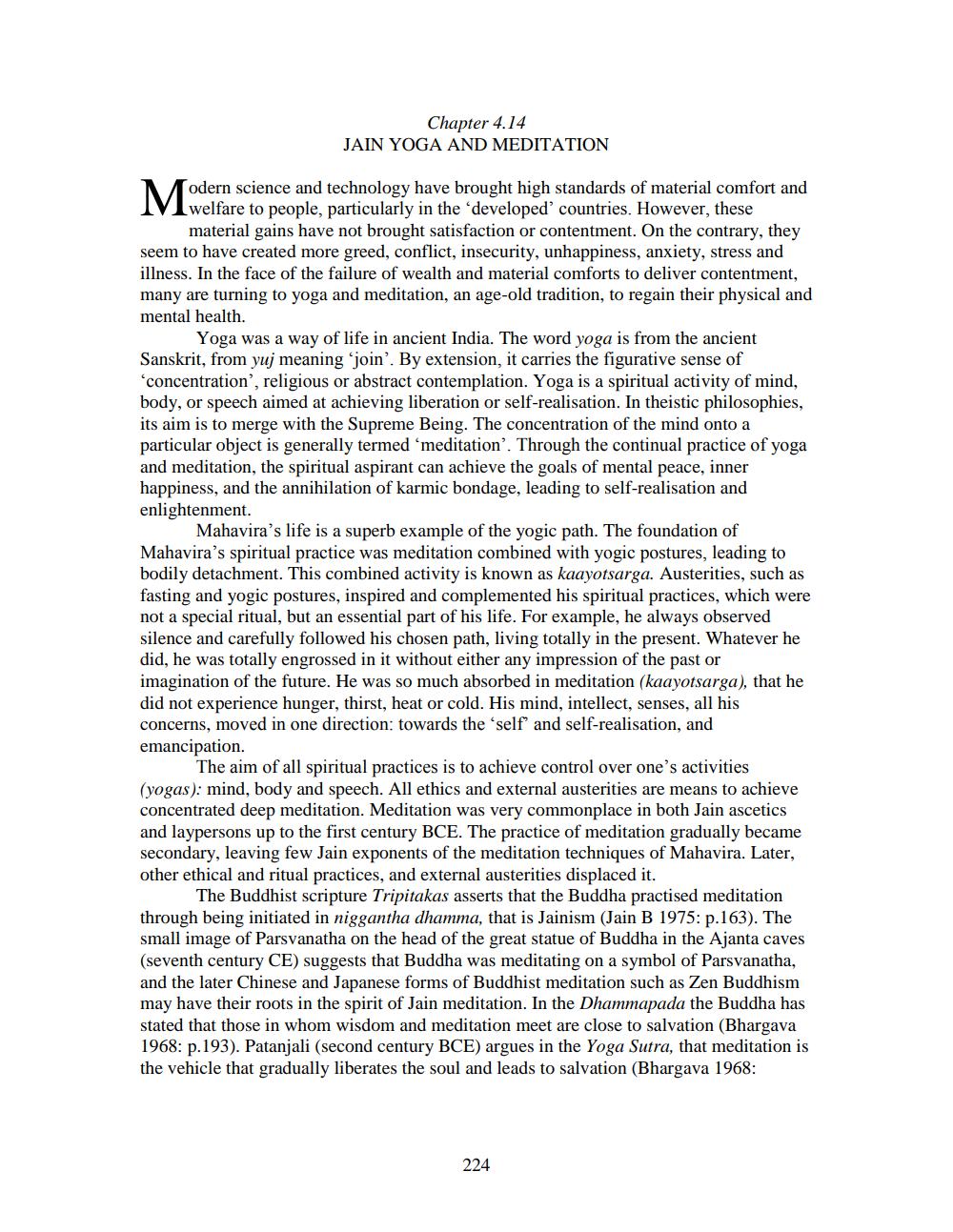________________
Chapter 4.14 JAIN YOGA AND MEDITATION
odern science and technology have brought high standards of material comfort and IV I welfare to people, particularly in the developed countries. However, these
material gains have not brought satisfaction or contentment. On the contrary, they seem to have created more greed, conflict, insecurity, unhappiness, anxiety, stress and illness. In the face of the failure of wealth and material comforts to deliver contentment, many are turning to yoga and meditation, an age-old tradition, to regain their physical and mental health.
Yoga was a way of life in ancient India. The word yoga is from the ancient Sanskrit, from yuj meaning join'. By extension, it carries the figurative sense of 'concentration', religious or abstract contemplation. Yoga is a spiritual activity of mind, body, or speech aimed at achieving liberation or self-realisation. In theistic philosophies, its aim is to merge with the Supreme Being. The concentration of the mind onto a particular object is generally termed 'meditation'. Through the continual practice of yoga and meditation, the spiritual aspirant can achieve the goals of mental peace, inner happiness, and the annihilation of karmic bondage, leading to self-realisation and enlightenment.
Mahavira's life is a superb example of the yogic path. The foundation of Mahavira's spiritual practice was meditation combined with yogic postures, leading to bodily detachment. This combined activity is known as kaayotsarga. Austerities, such as fasting and yogic postures, inspired and complemented his spiritual practices, which were not a special ritual, but an essential part of his life. For example, he always observed silence and carefully followed his chosen path, living totally in the present. Whatever he did, he was totally engrossed in it without either any impression of the past or imagination of the future. He was so much absorbed in meditation (kaayotsarga), that he did not experience hunger, thirst, heat or cold. His mind, intellect, senses, all his concerns, moved in one direction: towards the ‘self and self-realisation, and emancipation.
The aim of all spiritual practices is to achieve control over one's activities (yogas): mind, body and speech. All ethics and external austerities are means to achieve concentrated deep meditation. Meditation was very commonplace in both Jain ascetics and laypersons up to the first century BCE. The practice of meditation gradually became secondary, leaving few Jain exponents of the meditation techniques of Mahavira. Later, other ethical and ritual practices, and external austerities displaced it.
The Buddhist scripture Tripitakas asserts that the Buddha practised meditation through being initiated in niggantha dhamma, that is Jainism (Jain B 1975: p.163). The small image of Parsvanatha on the head of the great statue of Buddha in the Ajanta caves (seventh century CE) suggests that Buddha was meditating on a symbol of Parsvanatha, and the later Chinese and Japanese forms of Buddhist meditation such as Zen Buddhism may have their roots in the spirit of Jain meditation. In the Dhammapada the Buddha has stated that those in whom wisdom and meditation meet are close to salvation (Bhargava 1968: p.193). Patanjali (second century BCE) argues in the Yoga Sutra, that meditation is the vehicle that gradually liberates the soul and leads to salvation (Bhargava 1968:
224




